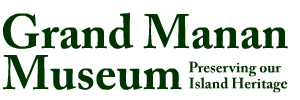MUSEUM MANDATE & HISTORY
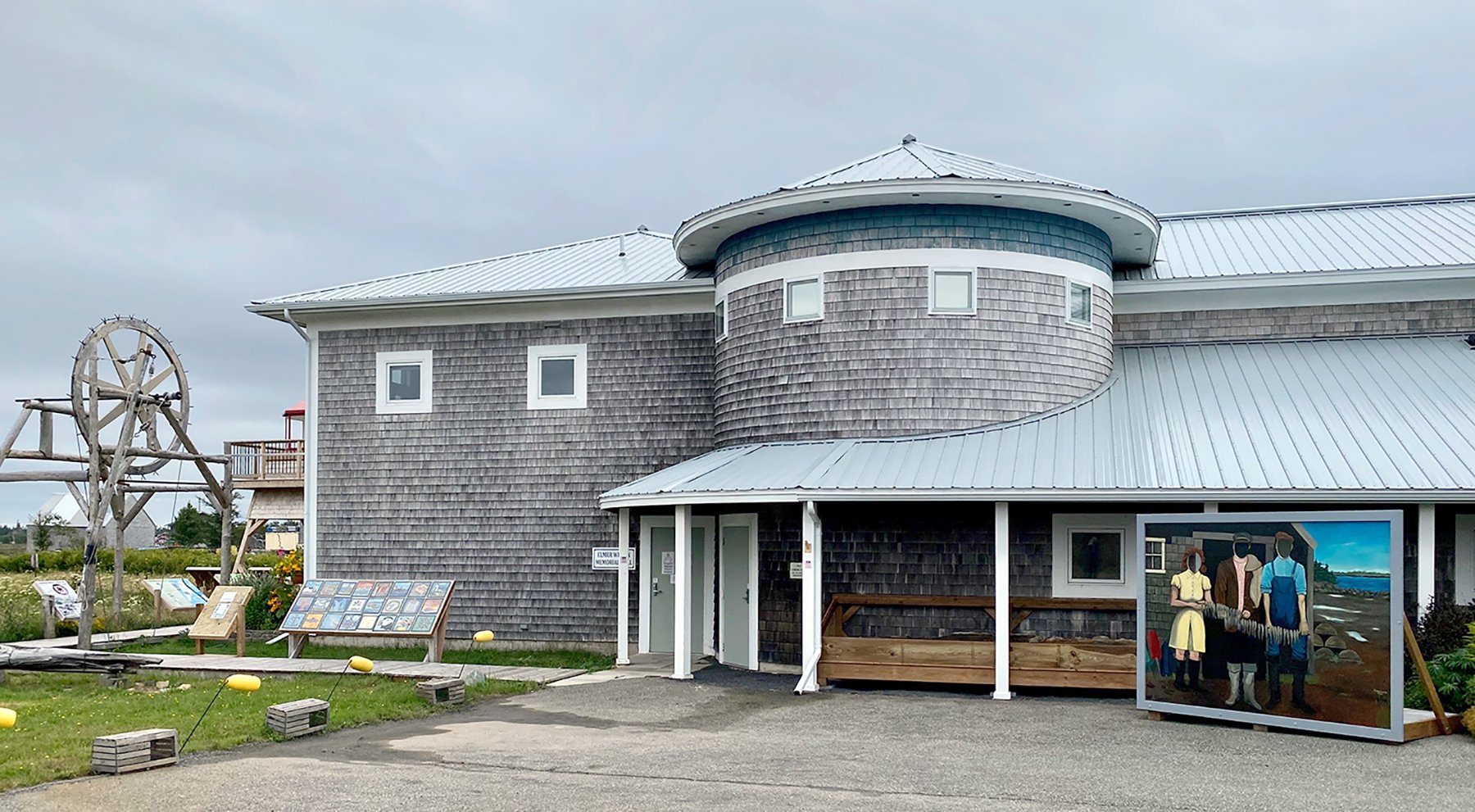
Corporate Description: Located in the parish of Grand Manan, Charlotte County, New Brunswick, the Grand Manan Museum was incorporated as a non-profit society under the New Brunswick Companies Act on 5 June 1962, No, 745 (under the name of Gerrish House Society Inc.) The name was formally changed to Grand Manan Museum Inc. on 18 June 1974, No, 74-696. The Museum has registered charitable status and can issue tax receipts for donations.
Vision: Broad public appreciation of and participation in the unique cultural heritage of Grand Manan.
Mission:
1. To promote, establish, develop, maintain and conduct a Museum that promotes awareness in Canada and abroad of the rich cultural, natural, geographic, indigenous, industrial and colonial heritage of Grand Manan through a variety of exhibitions, lectures, publications, educational programs and related activities.
2. To acquire by purchase, loan, gift, bequest or otherwise and have collections of antiquities, natural history, documents, records and art and allied objects of local and district interest and origin and such objects as may be in keeping with such purposes;
3. To protect, catalogue, maintain and conserve these collections and records within the financial abilities of the organization;
4. To display such collections through permanent and temporary exhibitions and in such a manner and at such times as may be considered advisable and appropriate;
5. To act as an umbrella for such organizations as the Grand Manan Archives, and to encourage the development of other such organizations whose objectives complement those of the Museum;
6. To enhance the education of children and adults in the natural sciences and island history through working with such community organizations as the Grand Manan Community School, the Municipality of Grand Manan, the Grand Manan Tourism Association, and other such local and regional organizations;
7. To develop and implement either alone or in co-operation with other persons and organizations any special project, program or activity in keeping with the above purposes of the Museum and which enriches the cultural life of the community;
8. To solicit, receive and hold contributions of money and property for the objects of the company, to raise money by subscriptions, and to grant any rights and privileges to subscribers and members, holding all property and income arising from there from in trust for the objects and purposes for which the company was incorporated.
OUR MUSEUM'S HISTORY
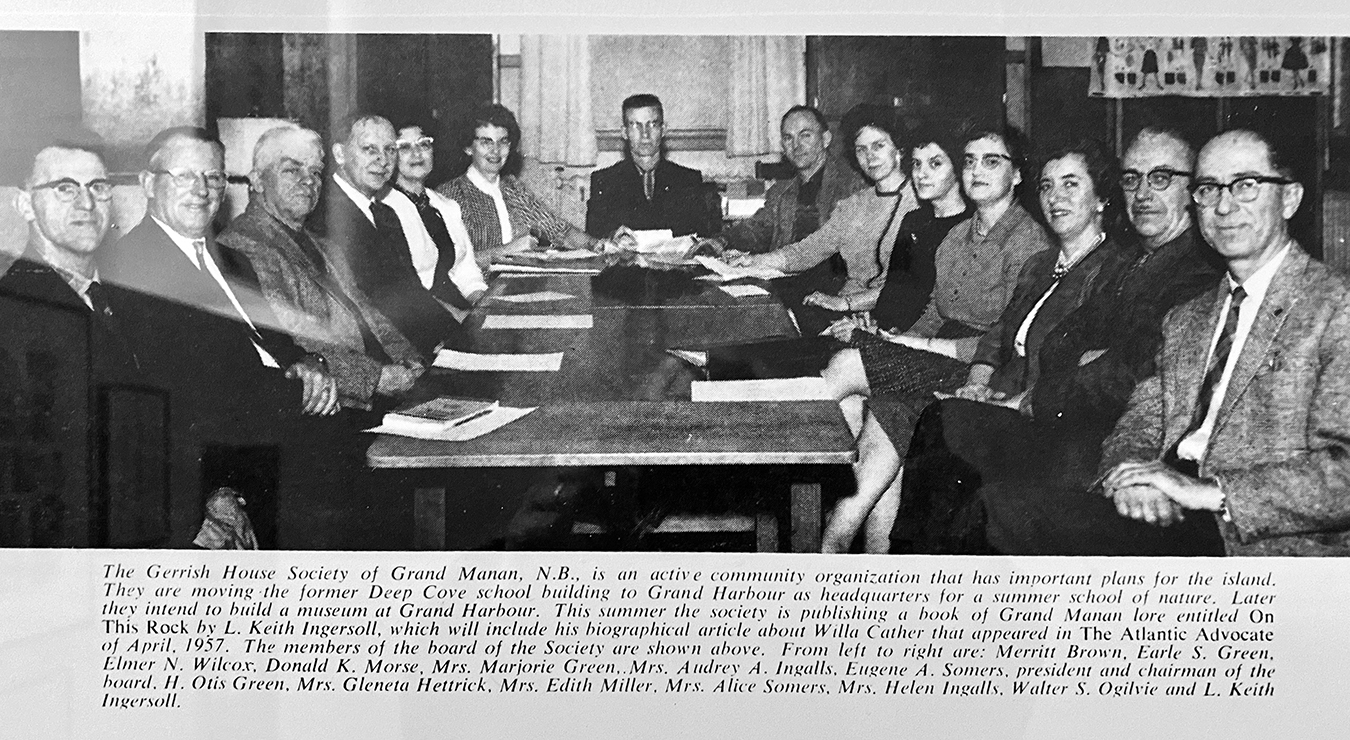 1961 - Gerrish House Society: L. Keith Ingersoll, along with other interested residents of Grand Manan, formed the Gerrish House Society with a board of 12 members in 1961. On 18 June 1974 the name was official changed to Grand Manan Museum Inc. As a community museum, their mandate was to collect, preserve and create exhibits that would focus on the environmental, economic, social and cultural history of the island.
1961 - Gerrish House Society: L. Keith Ingersoll, along with other interested residents of Grand Manan, formed the Gerrish House Society with a board of 12 members in 1961. On 18 June 1974 the name was official changed to Grand Manan Museum Inc. As a community museum, their mandate was to collect, preserve and create exhibits that would focus on the environmental, economic, social and cultural history of the island.
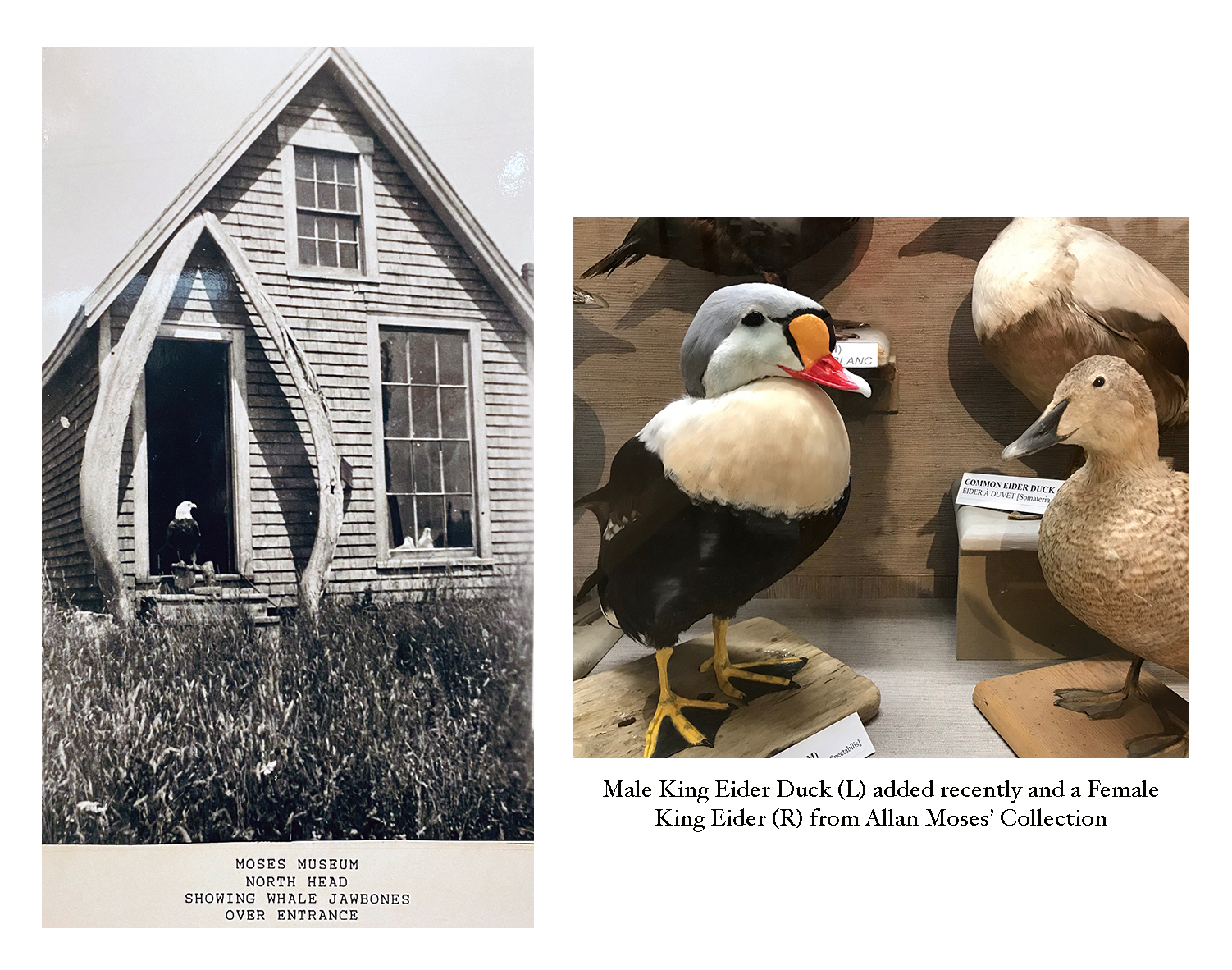
 1951-1961 – The Founding Collection: The Grand Manan Museum’s founding collection was the 300+ hundred birds of the Allan Moses Bird Collection. This Collection was given to the residents of Grand Manan in 1951 when Allan closed his private museum in North Head. The Collection first resided in the original Grand Harbour High School (since replaced by Grand Manan Community School). In 1961 it came under the care of the Gerrish House Society.
1951-1961 – The Founding Collection: The Grand Manan Museum’s founding collection was the 300+ hundred birds of the Allan Moses Bird Collection. This Collection was given to the residents of Grand Manan in 1951 when Allan closed his private museum in North Head. The Collection first resided in the original Grand Harbour High School (since replaced by Grand Manan Community School). In 1961 it came under the care of the Gerrish House Society.
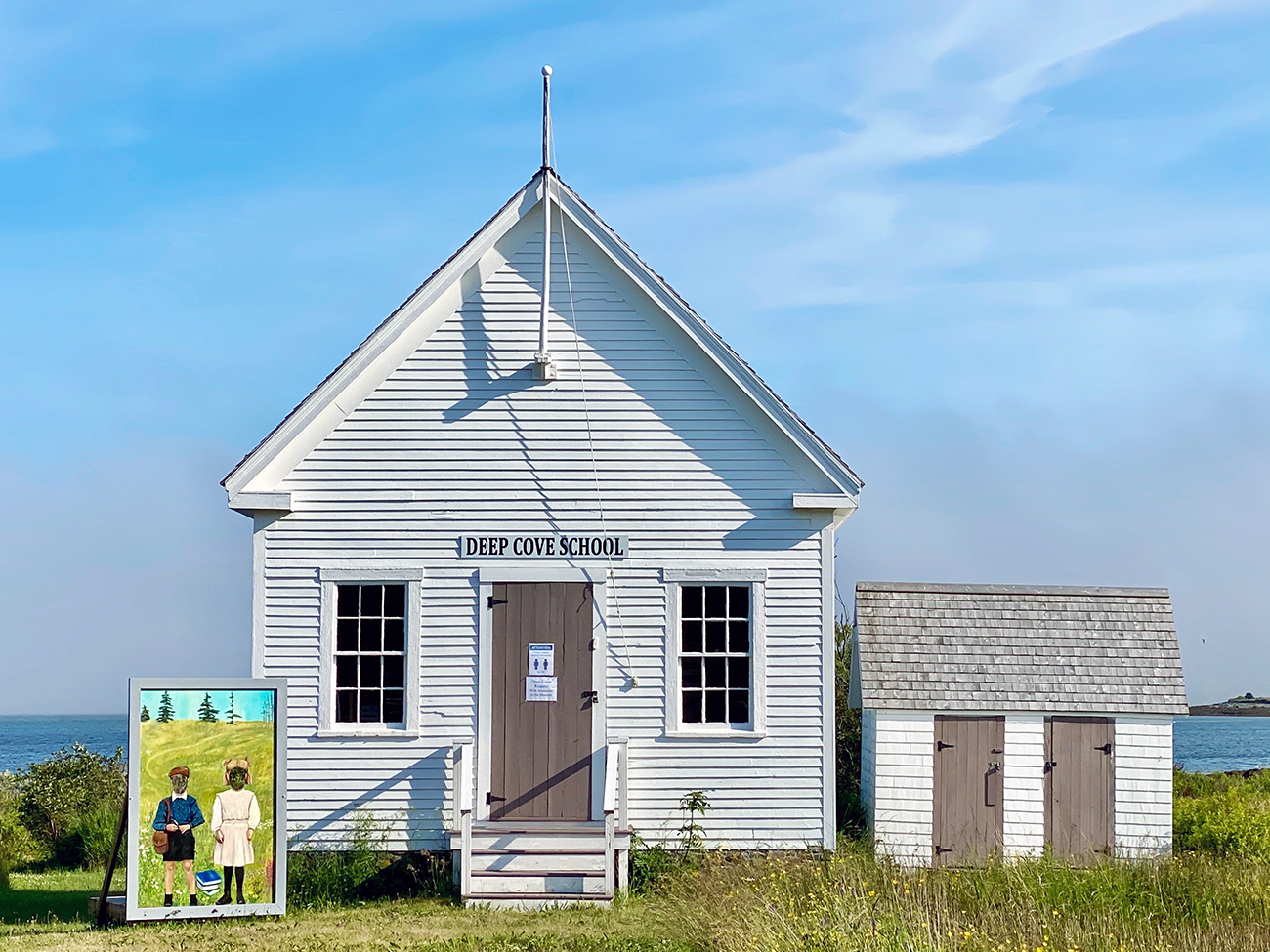
1963 - One Room School House from Deep Cove: This building was donated to the Grand Manan Museum and moved to the present day grounds in 1963 (before we had a Museum building).

1967 - Centennial Project Building: In 1967 the original Museum building, which was quite small, was built with a federal Centennial grant, and funding from the province and private donations. Initially it housed the Archives, a few small exhibits, and the Allan Moses Bird Collection.
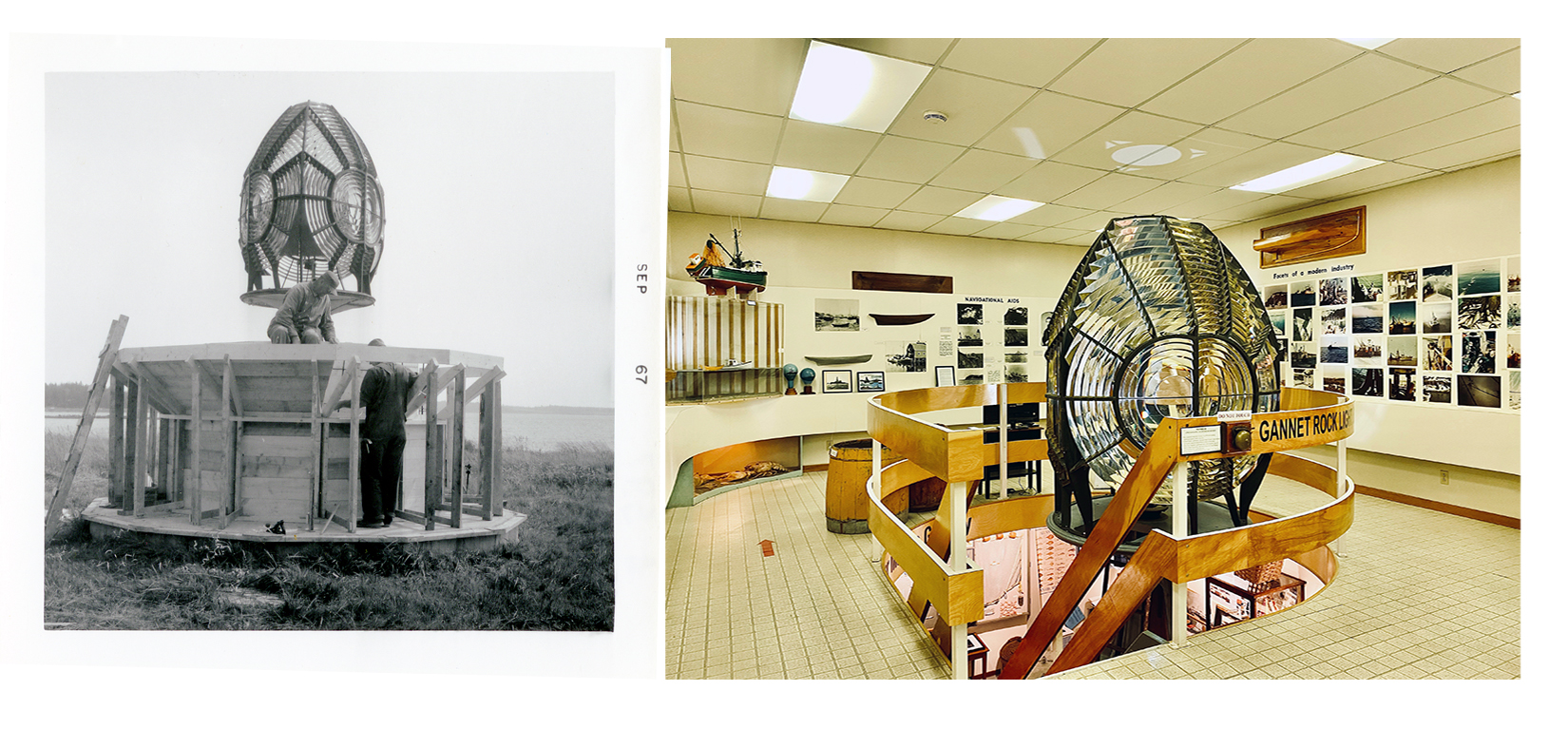
1979 – Walter B. McLaughlin Marine Gallery Expansion: In 1979 the Gannet Rock Lighthouse’s (Est. 1831) 2nd Order Fresnel Lens was moved from the Museum meadow, where it had lived since 1967, to a location behind the Museum where the new Marine Gallery extension was built around it.
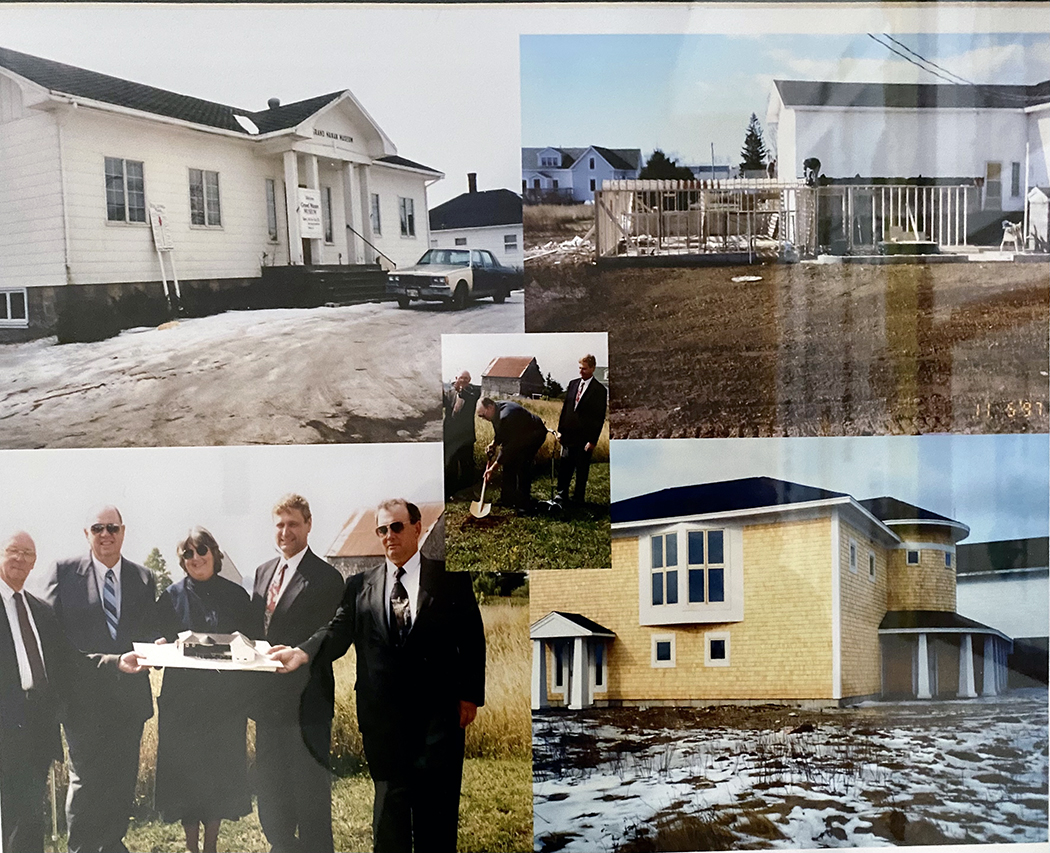
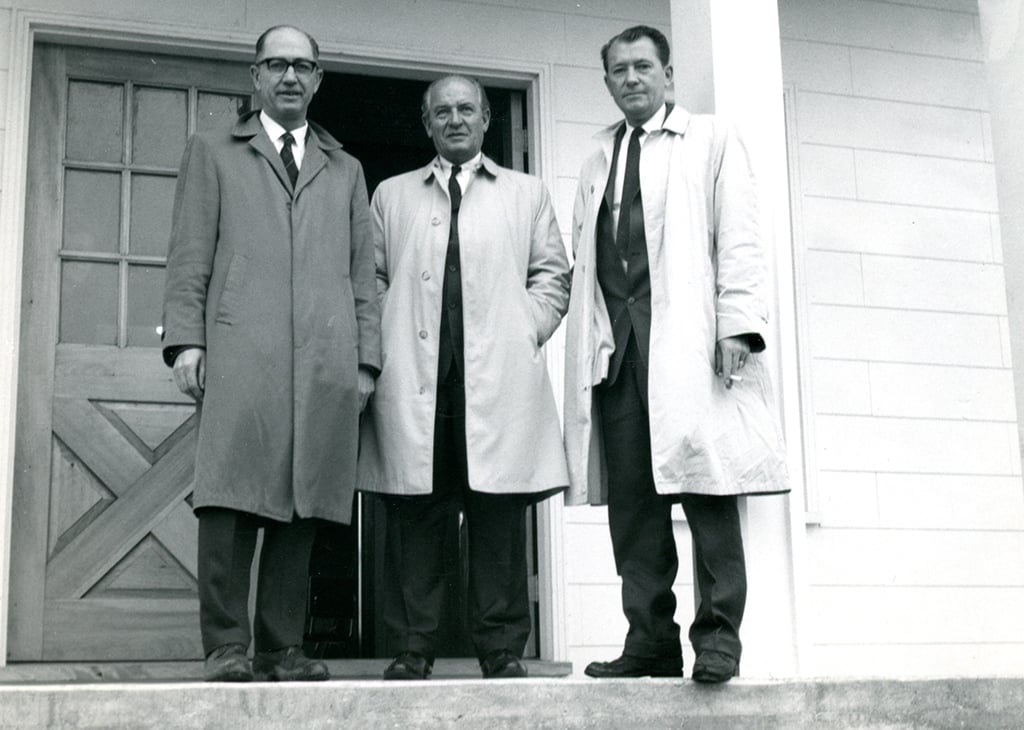
Keith L. Ingersoll (1914-1993) was one of the first Directors of the Museum and a founding board member. He was an historian, a teacher, newspaper correspondent, historian, author, co-director of planning for the Bicentennial of New Brunswick, Member of the Order of Canada, and a friend of many. When he left Grand Manan became the new Director of the New Brunswick Museum in Saint John.
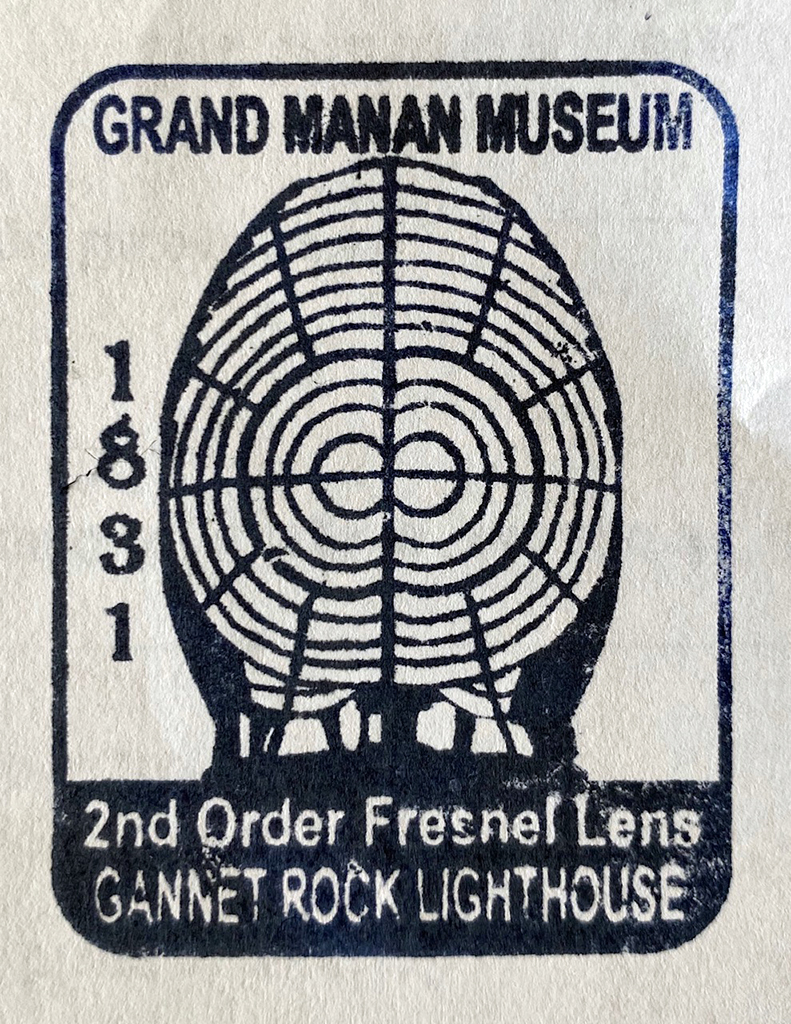
2013 - United States Lighthouse Society Membership: The Grand Manan Museum became a Member of the United States Lighthouse Society, and visitors can now purchase a Lighthouse Passport in our gift shop and have their passport stamped for visiting the Gannet Rock Light, one of over 400 member lighthouses in North America, only a handful of which are in Canada.
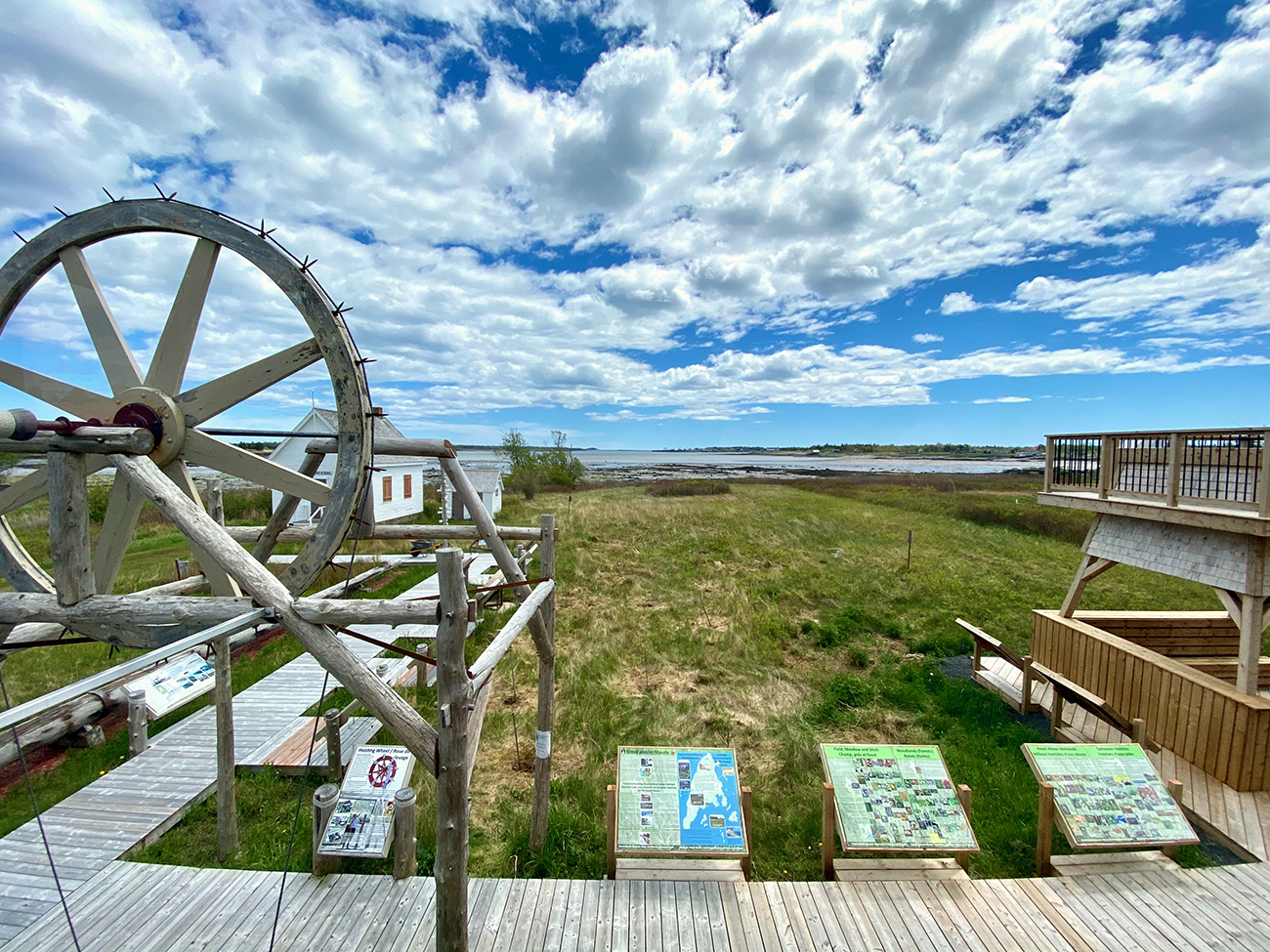
2017-2020 – “A Walk Through Time” Boardwalk Exhibits Expansion: The new boardwalk connects the side and back of the Museum to the Deep Cove School Exhibit and allows for many new exhibits along its length.
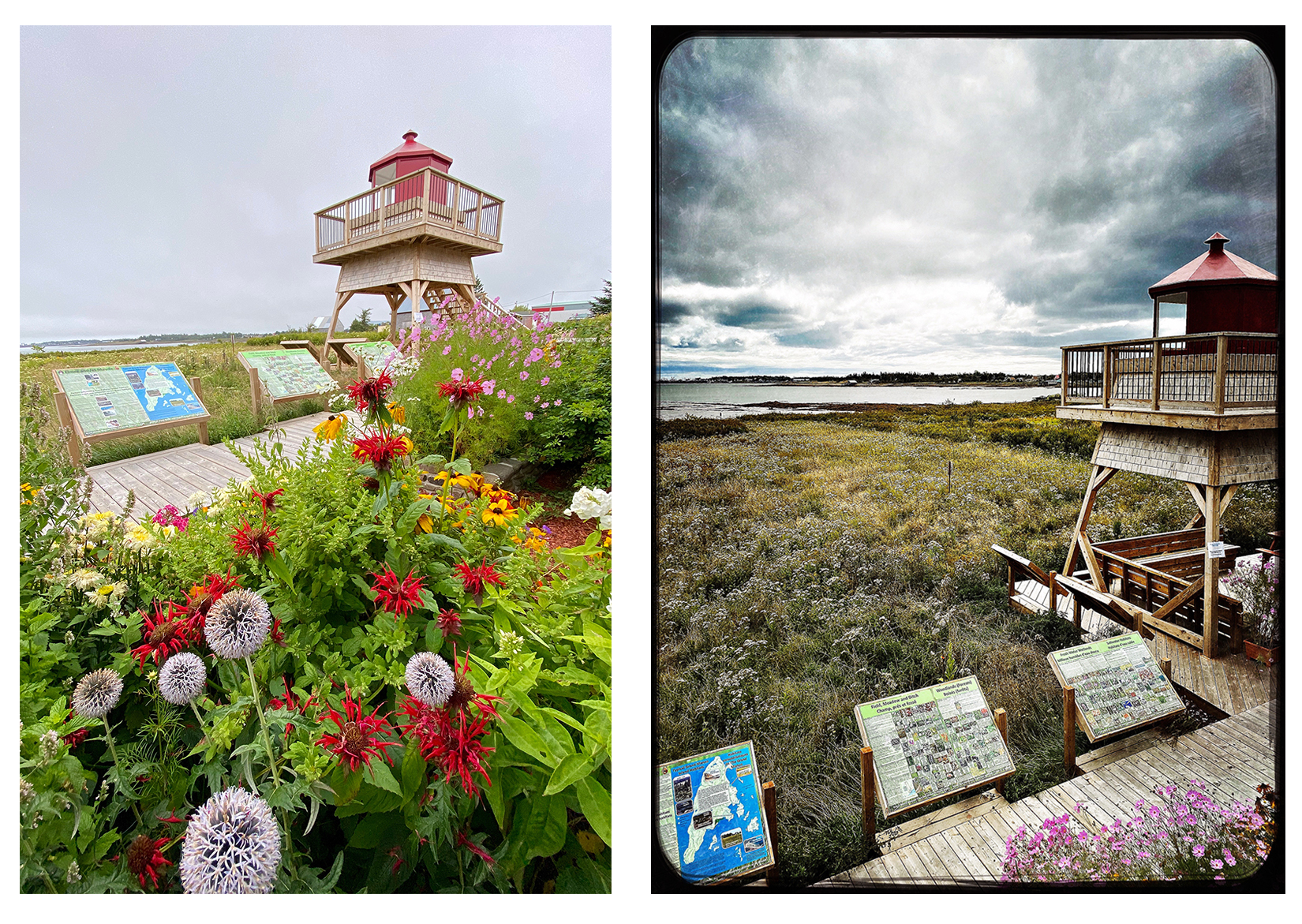
2019-2020 – Grand Harbour Lighthouse Memorial Gazebo & Elmer & Maude Botanical Exhibit: Also situated along the boardwalk behind the Museum, these two permanent exhibits consist of a lighthouse gazebo with three interpretive signs and seating, and two large stone-walled flower and herb gardens with four interpretive signs.
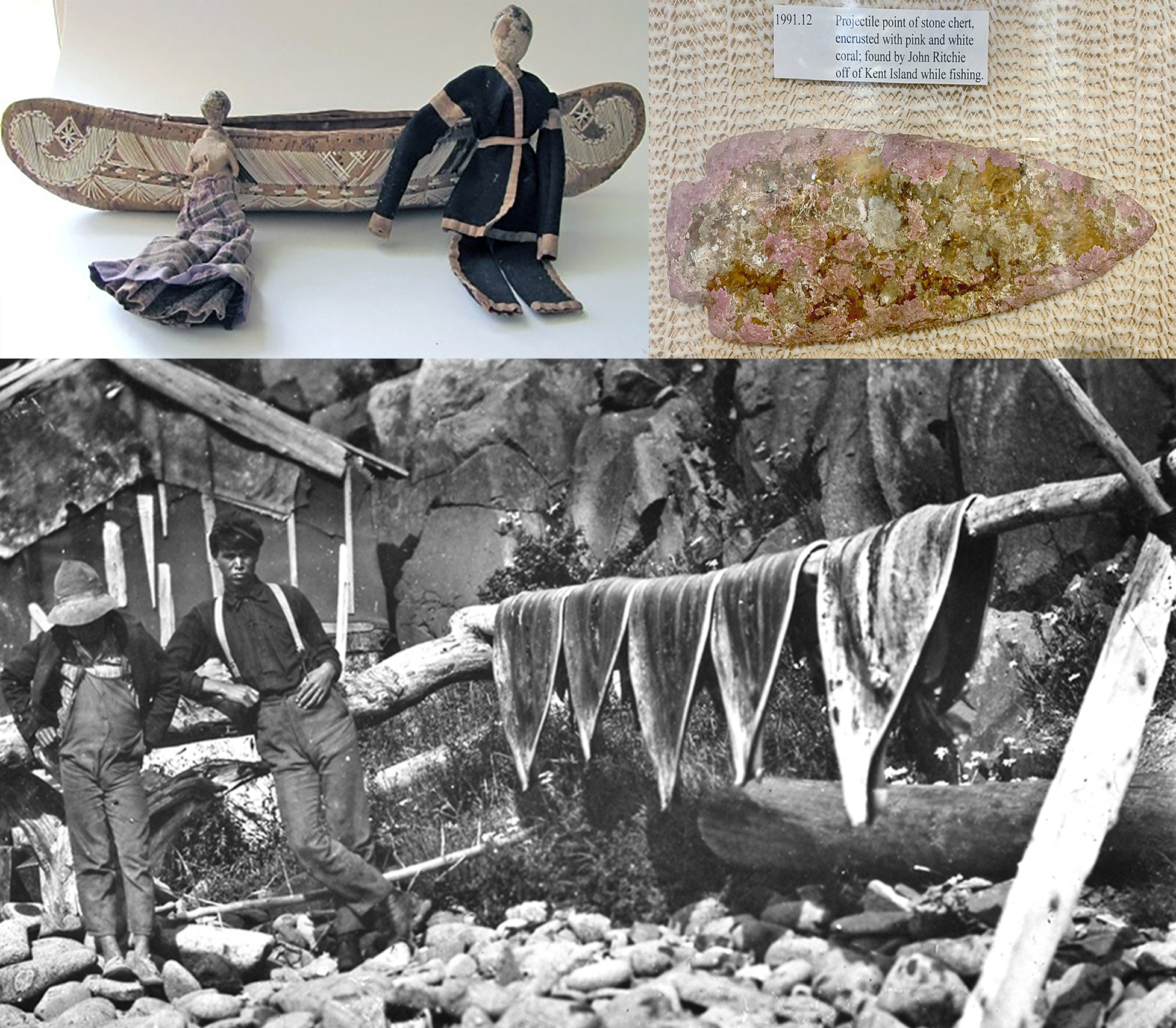
First Nations People: Canada’s First People visited our islands for thousands years before the first Europeans arrived. The Passamaquoddy Indians from present day Maine and New Brunswick came seasonally to hunt porpoise and seals for their meat and oil, to gather berries for food and dyes, and to harvest sweet grasses for weaving their basket wares. Although they never settled permanently on the island, they did interact with settlers, and many islanders today acknowledge their Passamaquoddy heritage. As late as the 1950s they visited the island and peddled their woven basket wares, many of which are still in use in island homes. Hand tools and spears carved from rocks dated at 4,000 years have been found on our islands and beaches. Maliseet and Mi’kmaq people may also have visited Grand Manan.
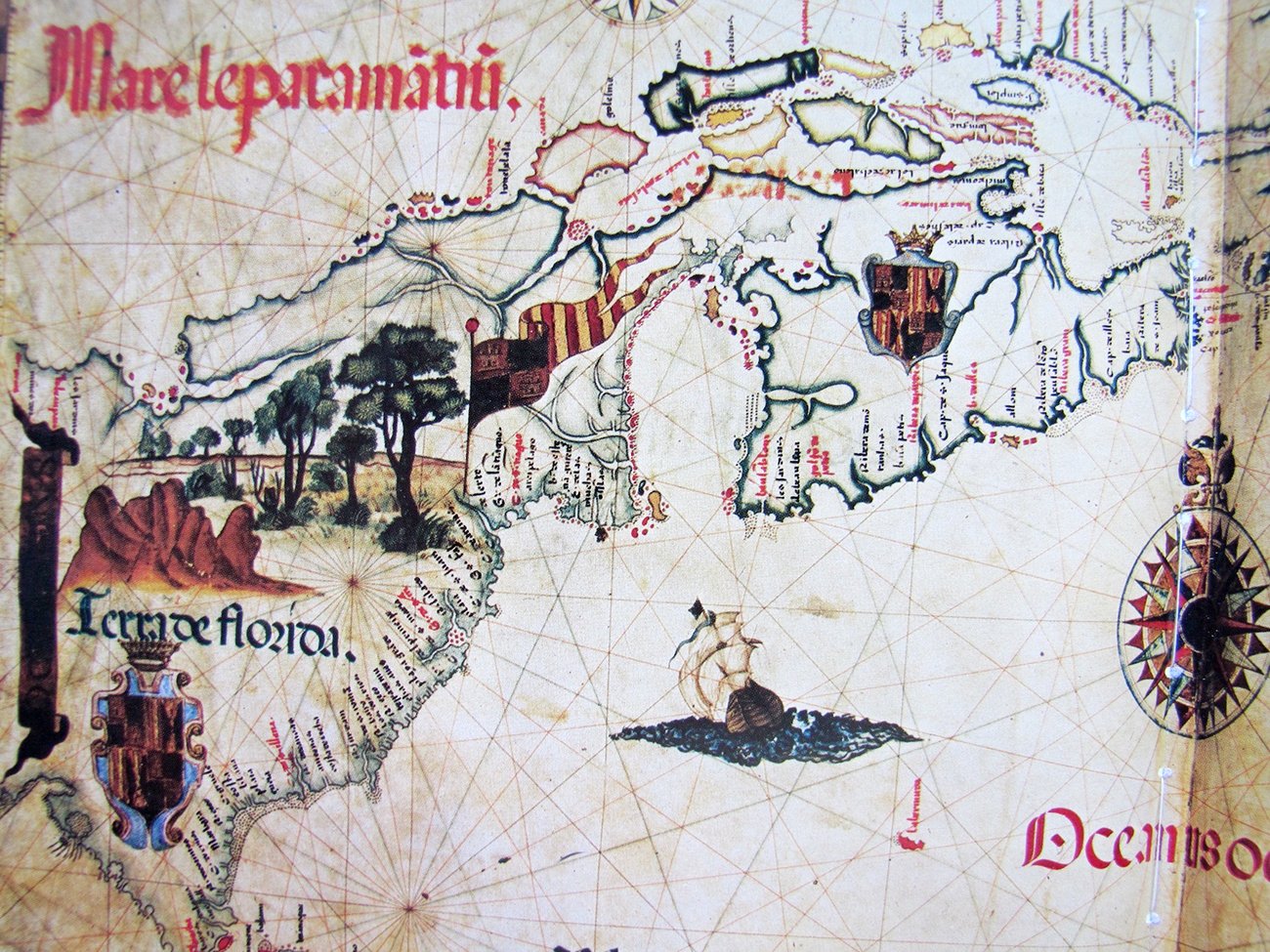
First Recorded Map of Grand Manan: Our island was first recorded on a map in 1558 by Diego Homem, a Portuguese map maker who replied heavily on the accounts of others (as did almost all European map mappers until Champlain) when making his maps. Accuracy was a luxury in early map making, and many early maps are filled with exaggerations, errors, and omissions. He did, however, describe a “cape of many islands” at the mouth of the Bay of Fundy. Sebastian Cabot in 1498 and Gaspar Cortereal in 1501 may have sited the island’s rocky 400 foot cliffs prior to this.
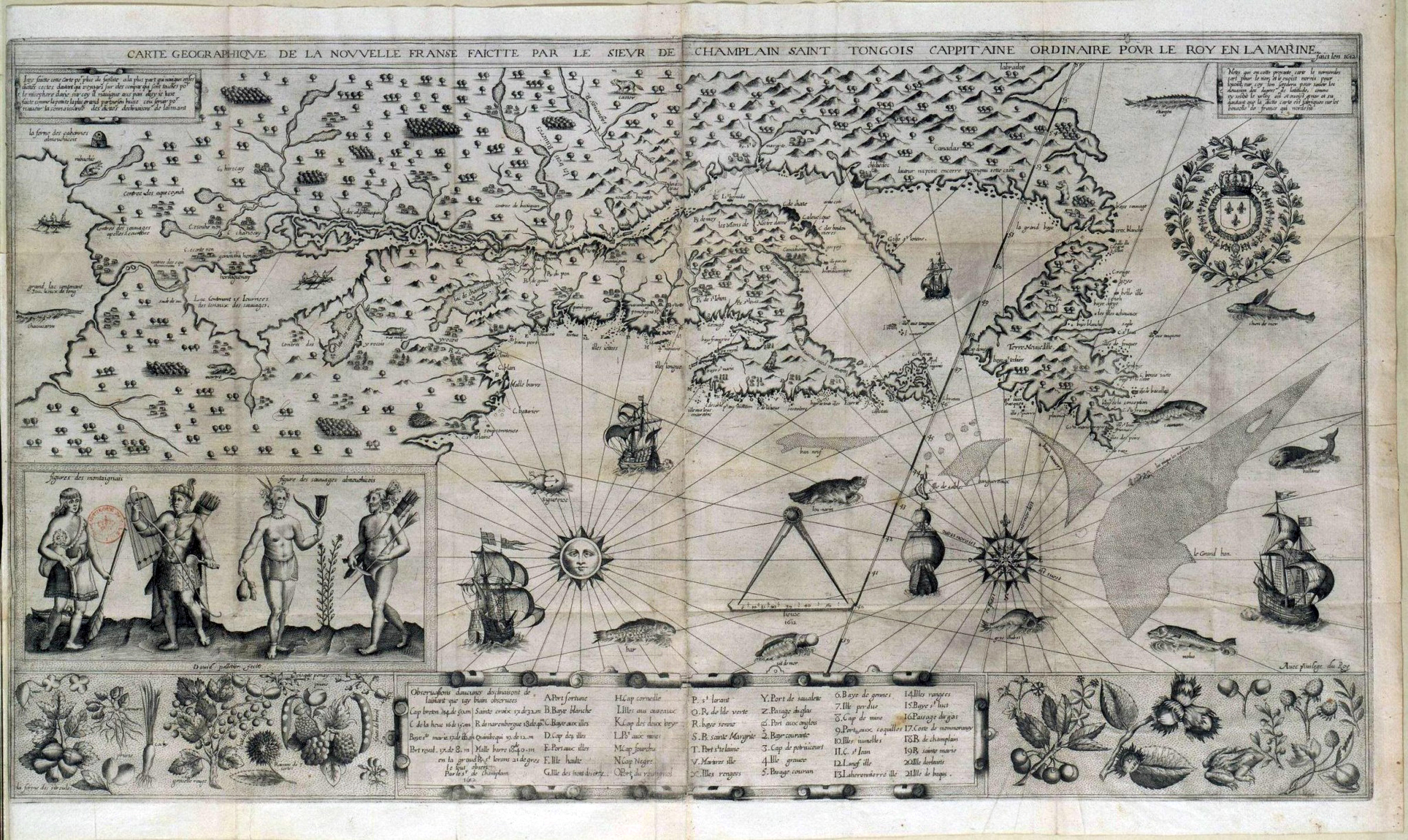
First Written Account: The first written account of the Island was in French Explorer Samuel Champlain’s “Voyages”, published 9 January 1613. He had explored the Bay of Fundy in September of 1604, where it is also recorded that his ship and crew spent a dreary night storm-bound near the southern end of the island.
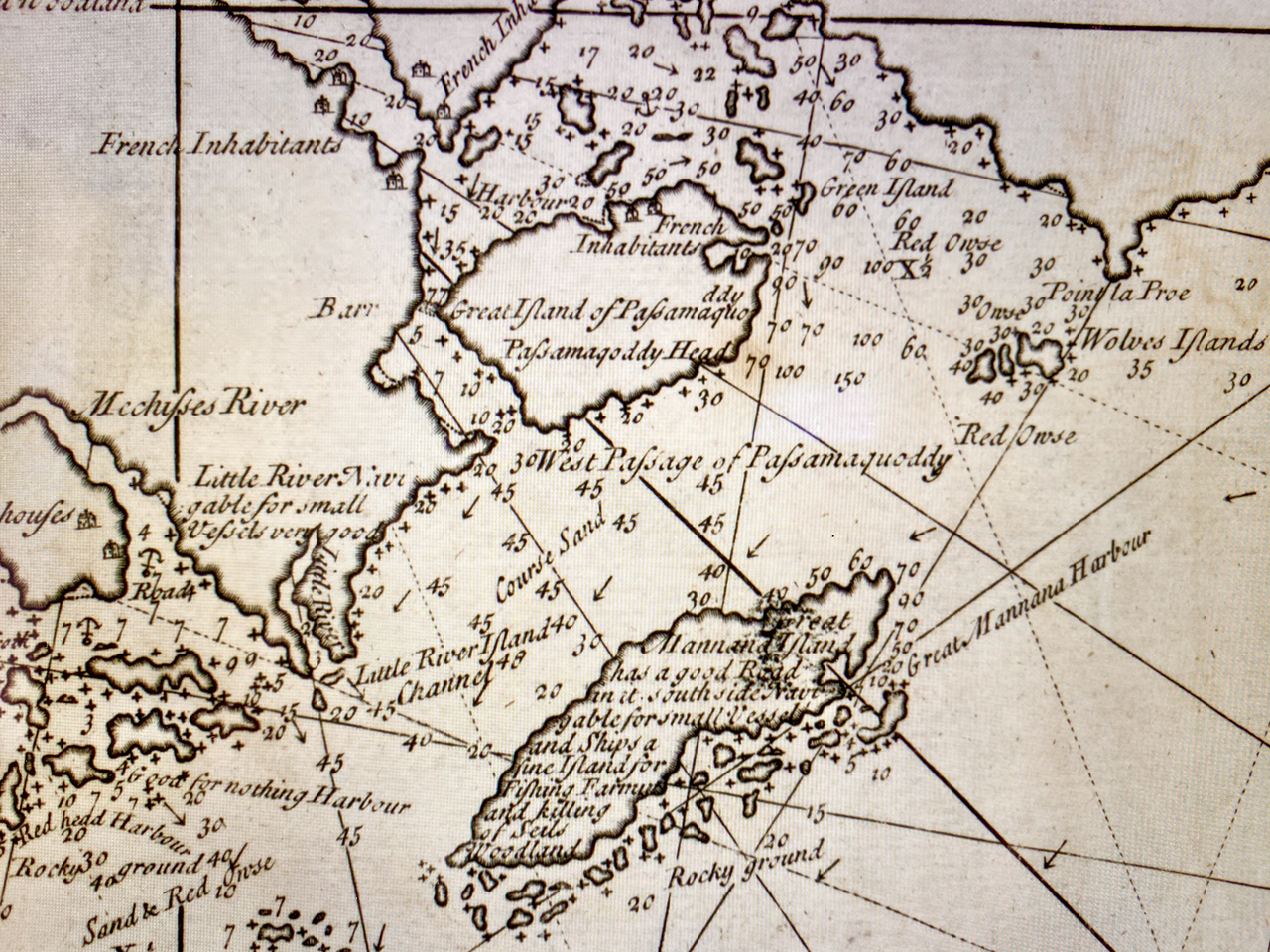
First Workable Chart for Navigation: The American, Cyprian Southack, was the first American to produce workable "charts" for mariners sailing in the area. His map, seen here, was produced in 1728 or 1730, and then printed in the fourth edition of the famous English Pilot which was continually re-published from the 1680s to the 1780s.

First Land Survey: Part of the original Nova Scotia land grant, the first survey of our Island was likely in 1734. Captain William Owen, a British naval Captain, visited in 1770 and may have caused the Island to be surveyed again ten years later. He recognizing it as a potential area for settlement, which had been considered too hazardous prior to this due to the occasional marauding bands of French and Indians along the borders of Acadia and New England.
First European Immigration: Following the American War of Independence, the first United Empire Loyalist settlers, under the leadership of Harvard graduate Moses Gerrish, were granted license to settle the island on 31 December 1783.
Farming & Fishing: In the early l9th century, Grand Manan attracted small groups of fishermen from the United States and Nova Scotia. Farming played a key role in the development of the early settlement. Prior to 1820 farming competed with fishing as a way of life, but by 1850 torch fishing for herring, weir fishing and lobster fishing had become more popular. During the last half of the century Grand Manan fishermen became masters of their grounds by skill and determination. As fishing became a commercial venture, smoke houses, ice and salt houses, and sawdust sheds sprang up along the shorelines. In the 1867 census approximately 50% of islanders identified as farmers, and 50% as fishermen. Today there are islanders who keep bees, maintain a large vegetable garden or keep chickens, but fishing has been the mainstay of the economy for much of the 20th century and in the 21st
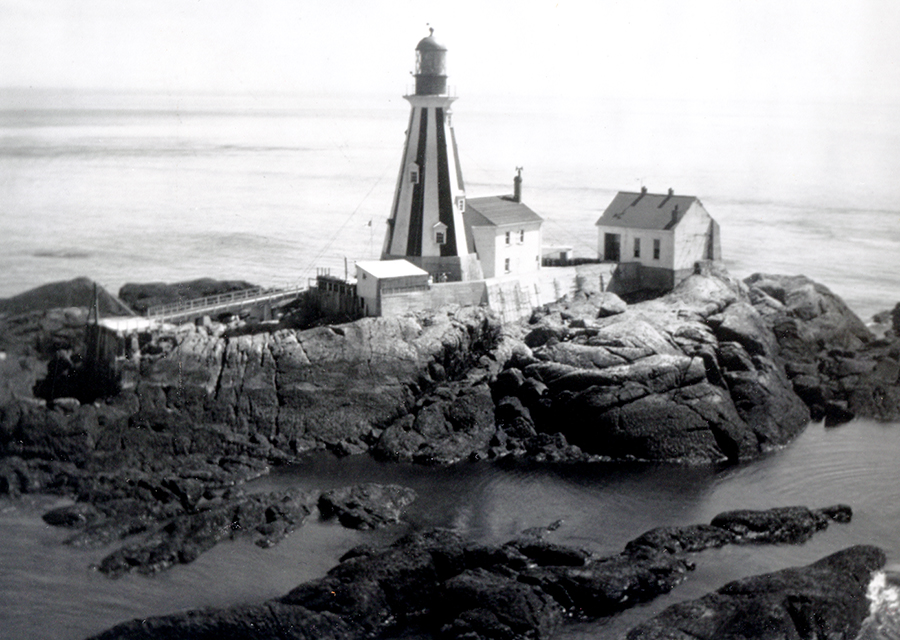
Aids to Navigation - Our Lighthouses: With treacherous ledges and tides of 25 feet, it was soon realized that light and fog stations were essential to protect the shipping route in and out of the Bay of Fundy. Saint John in the 19th century was one of the busiest shipping ports in the world, and ships had to travel past Grand Manan to reach her port. Before automation, nine manned lighthouses were in operation around Grand Manan. Grand Manan has hundreds of recorded shipwrecks which have been well documented in maps, books, paintings, and in our shipwreck exhibit.
The first lighthouse was built in 1831 on Gannet Rock. The impressive 2nd Order Fresnel Lens, the second most powerful lens in the world at the time, now resides in our Museum in the Walter B. McLaughlin Marine Gallery.
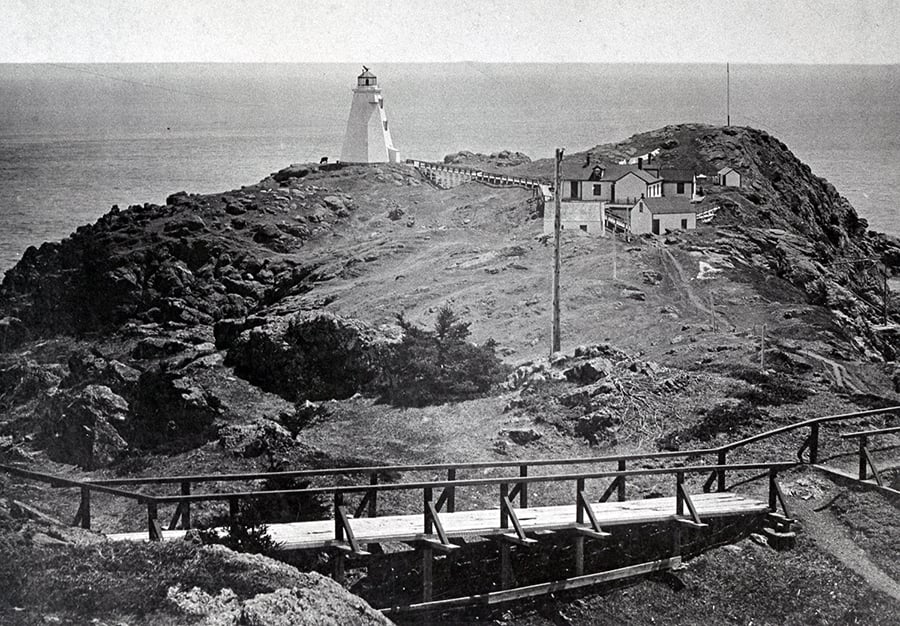
The iconic Swallow Tail Lighthouse was first lit in 1860. Today Swallow Tail Lighthouse is one of the most photographed lighthouses in Canada. The lightkeeper's house, the grounds, and the lighthouse itself are now the property of the Village of Grand Manan. Through a long-term lease with the Village, the Swallowtail Keepers Society has now restored to its pre-1960 state, and continues to preserve, the buildings, lighthouse tower and grounds of Swallow Tail. The lighthouse itself is now a fine museum, open for tours in the summer months for a small admission fee. Extensive interpretive signage around the grounds and inside the lighthouse make a visit to Swallow Tail a well-rounded educational and entertainment experience.
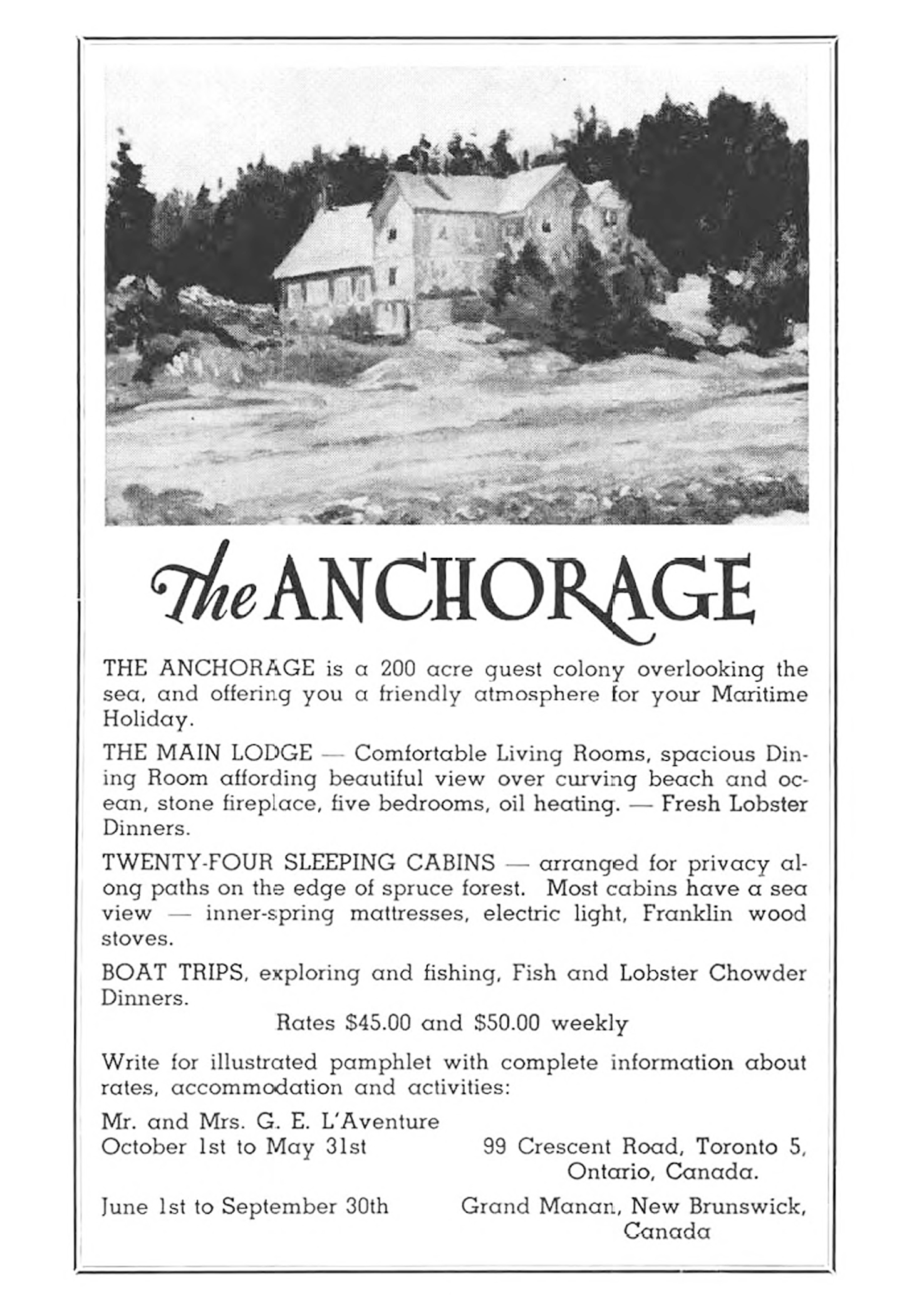
Tourism: Tourism has played a significant role in the economy of the Island since the mid to late 19th century when it became a popular summer destination for New Englanders and Upper Canadians (Ontario and Quebec). Tourism has also resulted in a small but steady stream of immigration and off-island land ownership as visitors decide to move here, buy land and houses, or build cottages.
Today there is only one remaining hotel – the historic Marathon Inn – but there are two camp grounds, a motel and many cottages, B & Bs and Air B & Bs available for summer visitors. Daily whale, bird watching and scenic tours are also a big draw to the Island, and sea kayaking is very popular. Extensive, well-marked heritage trails, maintained by the Grand Manan Trails Association, of various distances and difficulty, allow both the novice and the experienced hiker to enjoy the serenity of the outdoors and spectacular views of the Island. Anchorage Provincial Park also maintains wheel-chair accessible trails and boardwalks.
